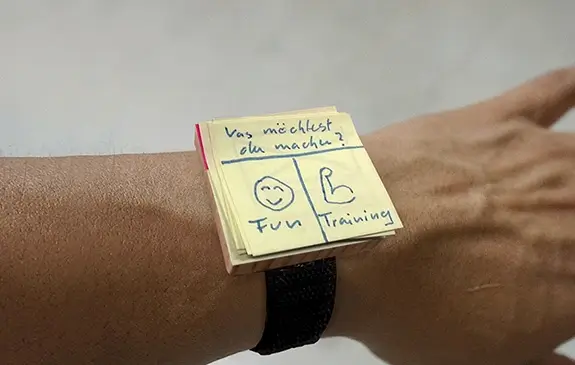
Disruptive Design Thinking
Including his thesis might be unusual for a senior designer. Nevertheless, its process is a fine example of lean, research-driven product design, and it has still served as a template for many projects that followed.
Task
Enable fashion sellers to manage their articles and orders.
Target group:
Tech early-adopters with an interest in fitness
Industry:
Health
Client:
self (thesis)
Year:
2015
Services
Product Strategy
- Design Thinking
- Disruptive innovation
- Job-to-be-done
- Team workshops
- Design planning
User Experience (UX)
- (Proto-)Personas
- Use cases
- User flows
- Paper prototyping
- Wireframes
User Research
- Customer interviews
- Concept testings
- Surveys
- Desk research
Description
As part of my thesis in studying User Experience (UX) (BA), I developed a joint process model for innovation projects, connecting Clayton M. Christensen's Disruptive Innovation with Hasso Plattner's Design Thinking process model.
Disruptive Innovation
Chayton M. Christensen's comparison of low-end and new-market disruptions with sustaining innovations
Design Thinking process
6-step variant by Hasso Plattner
To validate the effectiveness of the process design, I led a team of colleagues and co-students on a practical innovation project that explored the disruptive potential of smartwatches for the fitness app market.
Iterative Disruption model
Composite process model of Disruptive Design, Design Thinking and Lean Development
Following to my process model draft, I faciliated several workshops in Disruptive Design to identify unmet customer need, related to fitness. Using the workshop outcomes as a wicked problem, our team went through a Design Thinking process of six phases.
Through data-driven insights from online and offline research conducted in advance, the Disruptive Design workshop was able to identify a suitable disruptive Job-To-Be-Done as indicator for an unsolved problem.
As next step in the process model, a two-part Design Thinking workshop used the research data, group ideation, paper prototyping and lean concept testing on the steets of Berlin to develop a fitting early solution concept.
The casual fitness app evaluates body, time, location and weather data by using smartwatch features. Based on this, exercises are suggested to users which can easily be implemented into daily life, always using just the right amount of time.
Process Artefacts
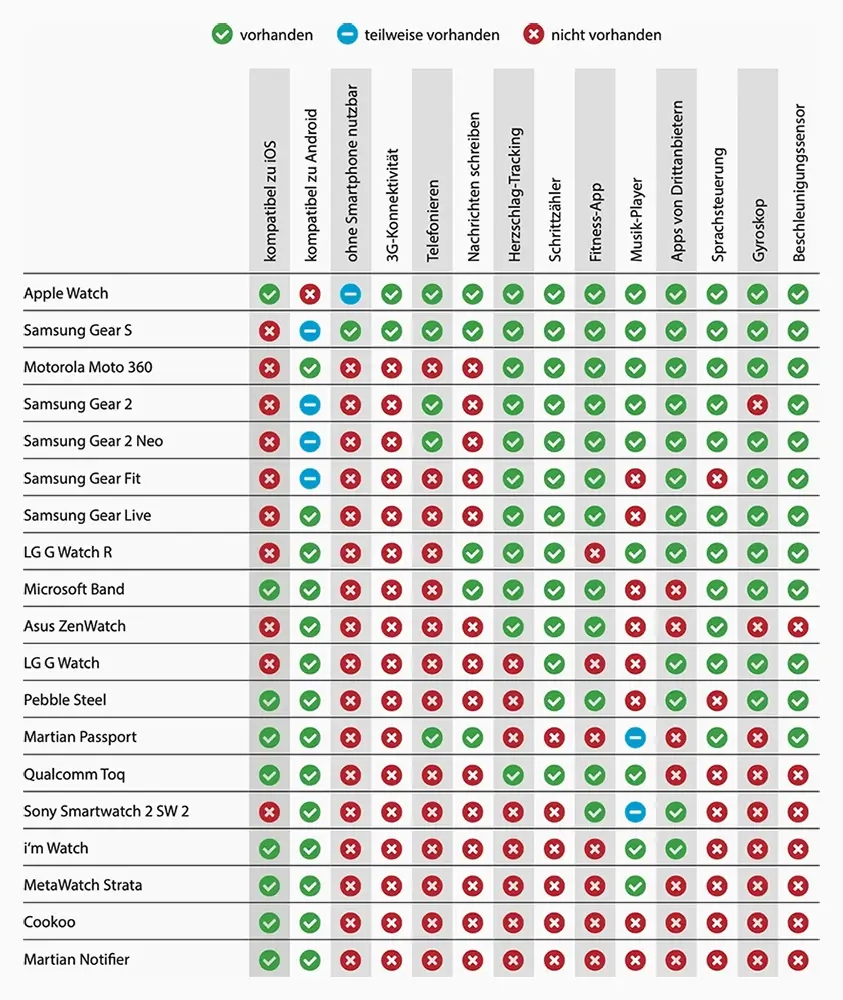
Feature comparison for smartwatches
State of technology at the end of 2014
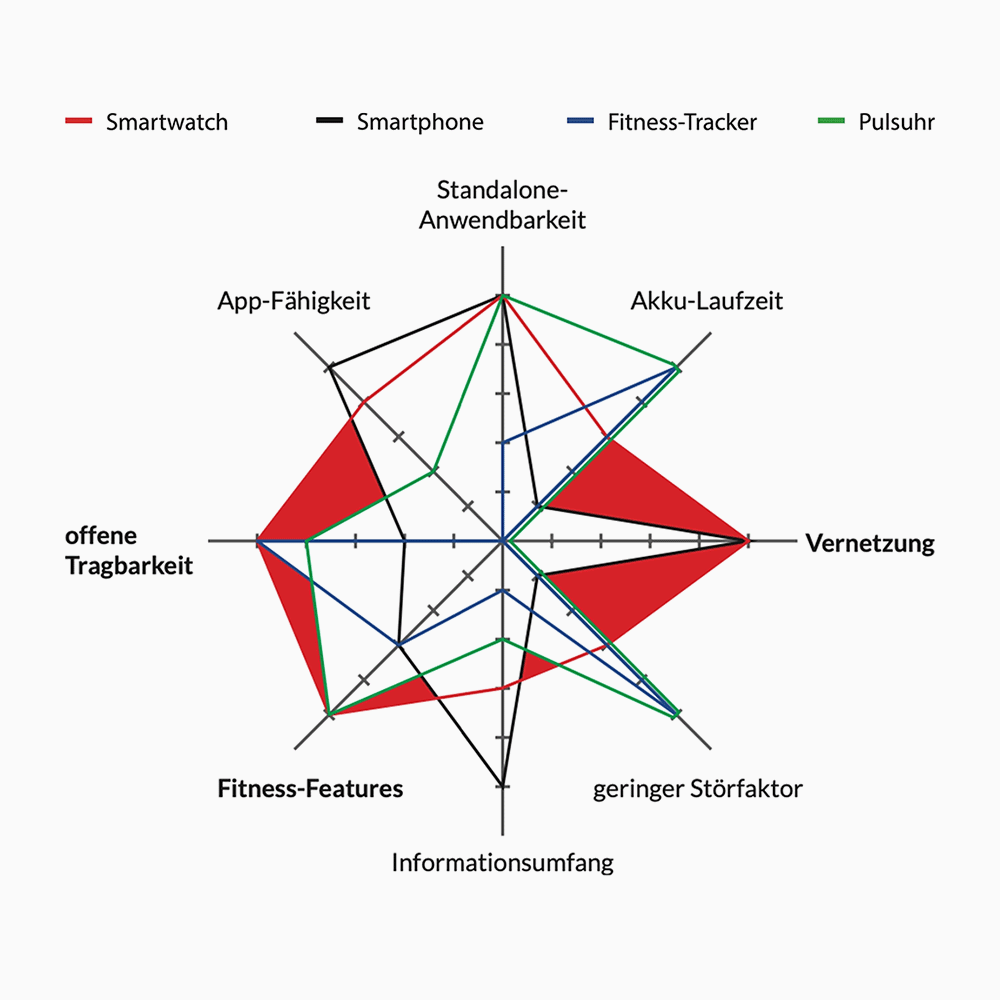
Technical and contexutual USP of smartwatches
Comparison of different wearable devices
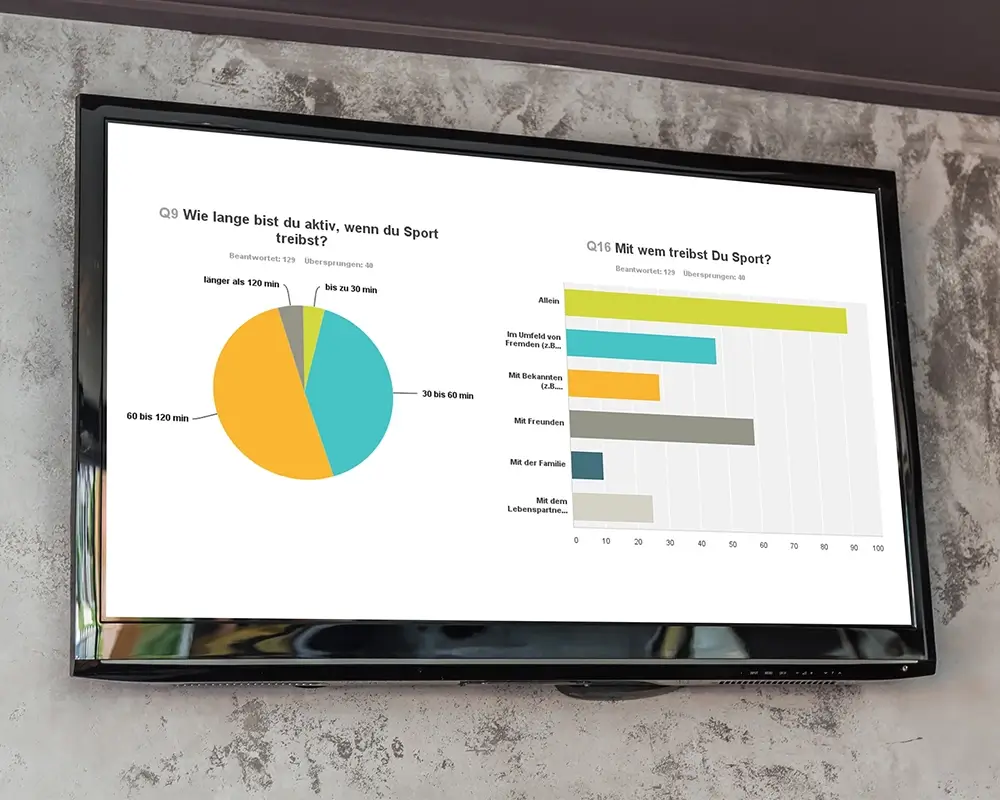
Results from UX research
A dynamic online survey to sort out unsuitable participants and identify unmet needs
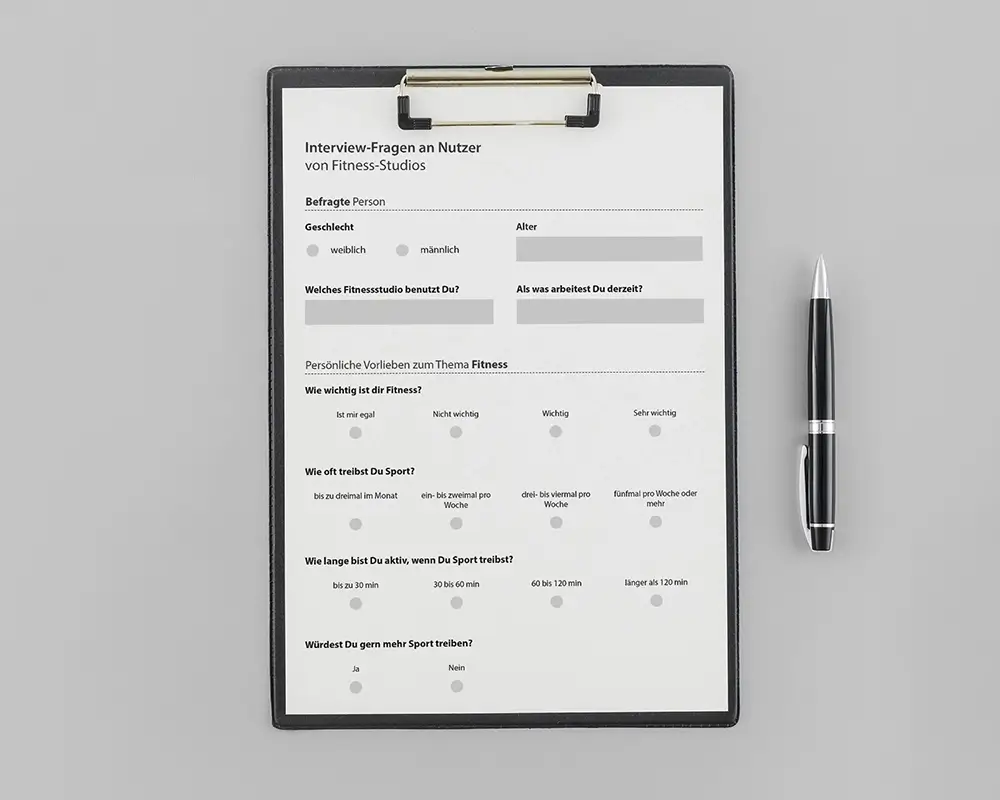
Offline questionnaire
Additional research on passersby in front of fitness centers
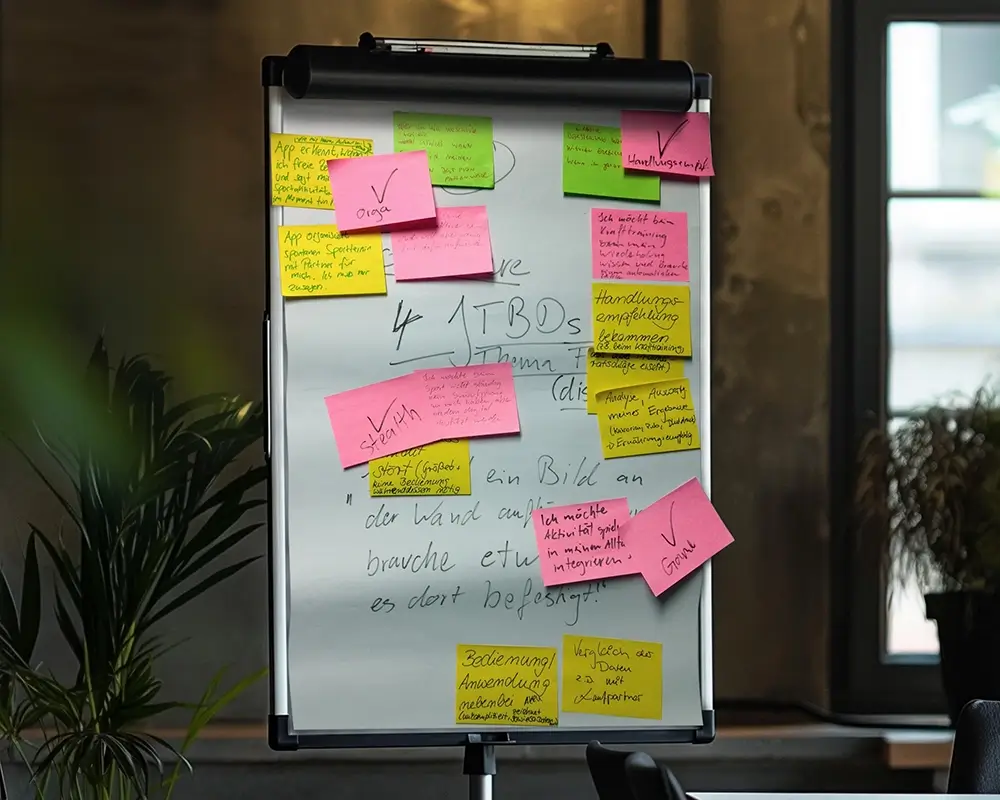
Results from Disruptive Design workshop
Contexts for high potential Jobs-To-Be-Done: time management, recommended actions, descrete fitness companion
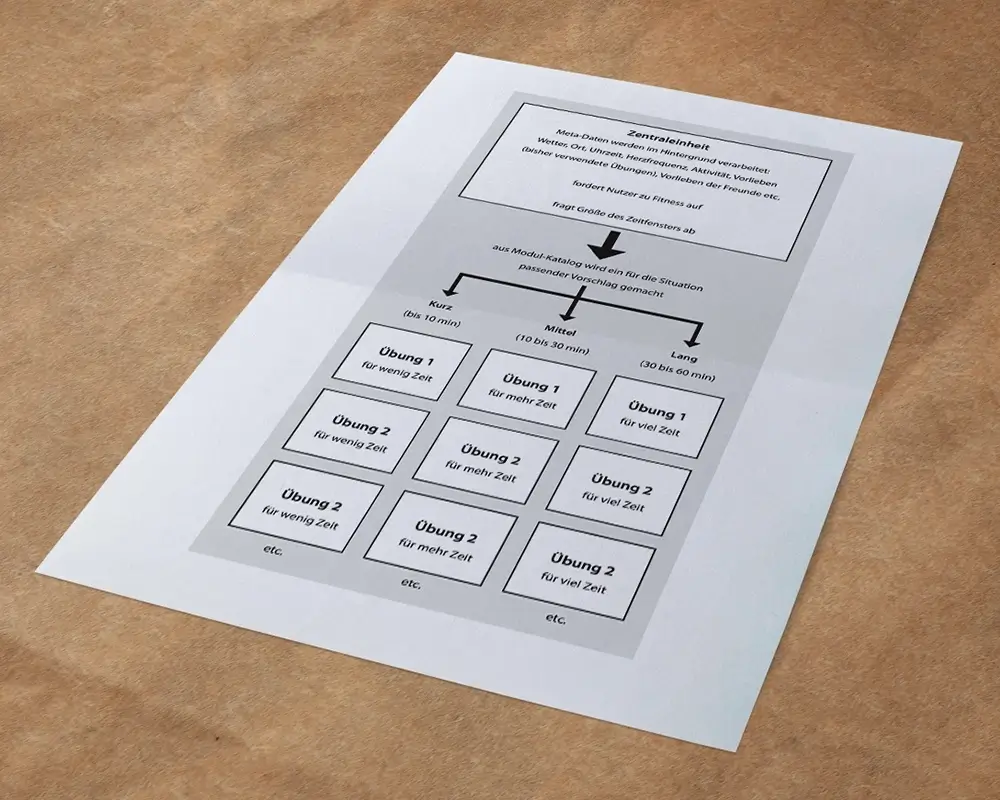
Structure of frame application
Ideation frame for particpants in Design Thinking workshops
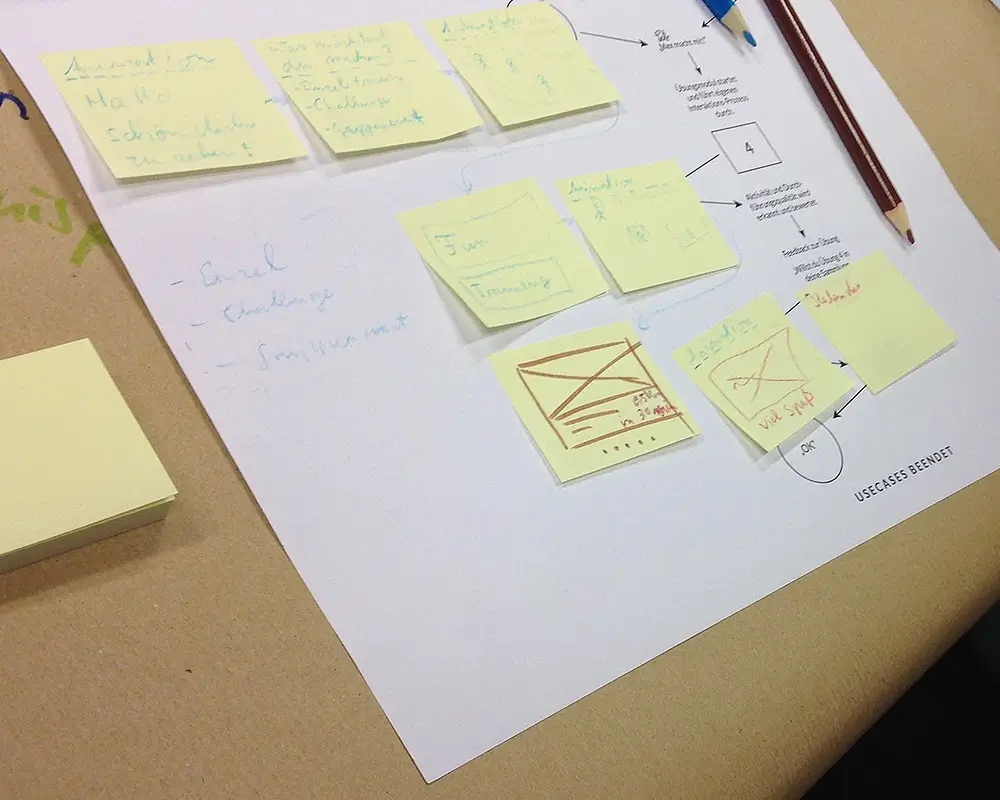
Sketches on small sticky notes
Visualizing features and interaction process
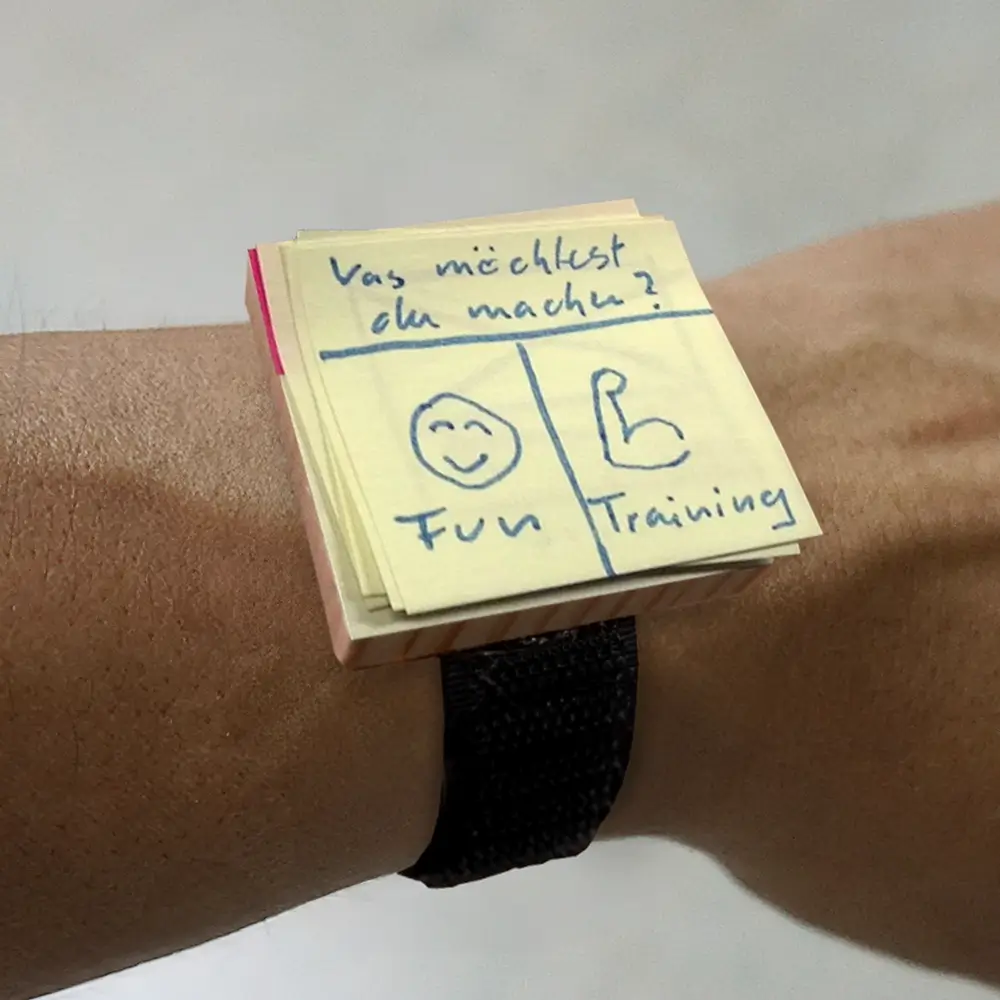
Paper prototype on smartwatch dummy
Sticky notes on wooden tile glued to hook-and-loop fastener, ready for lean hallway testing on the streets
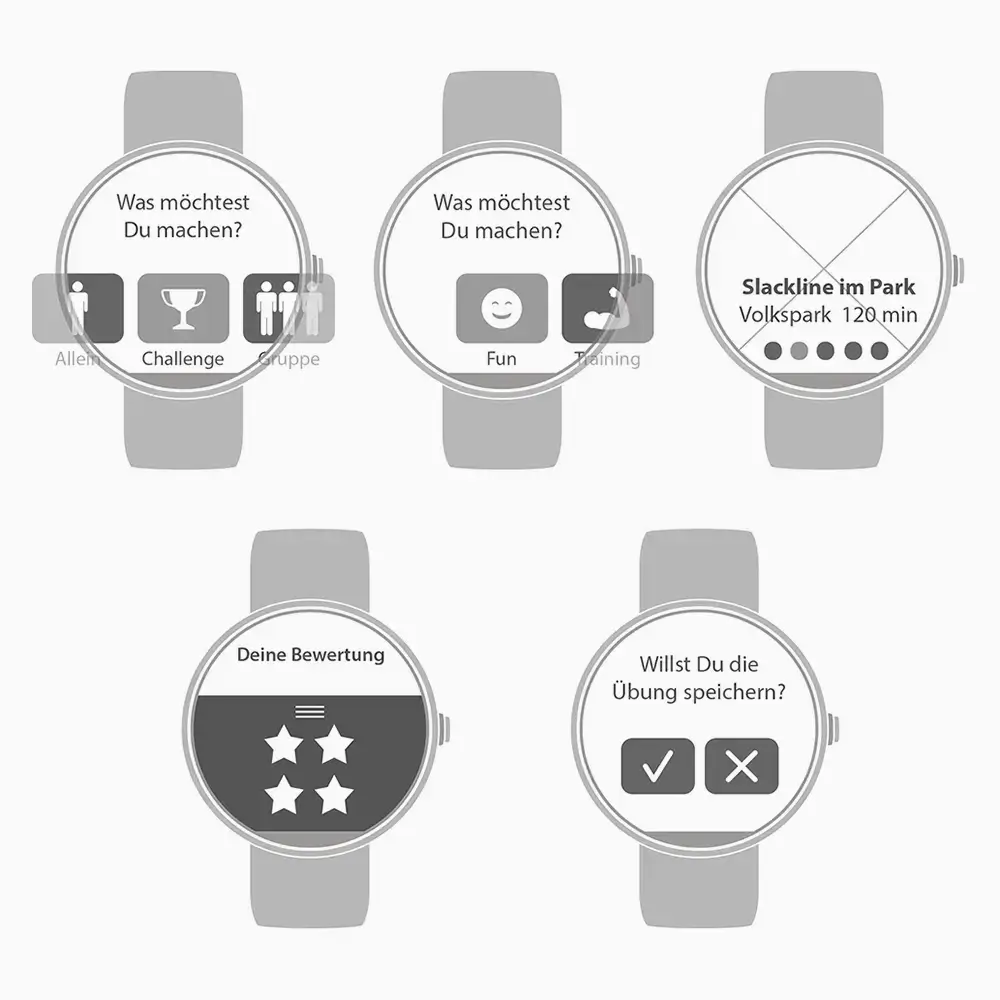
Final wireframes
Consolidated design concept after iteration upon customer feedback